18+ Sample Exhibit Lists
-
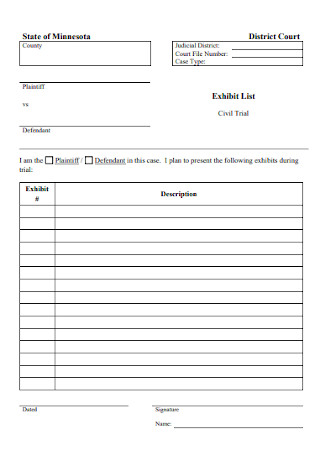
Civil Trial Exhibit List
download now -
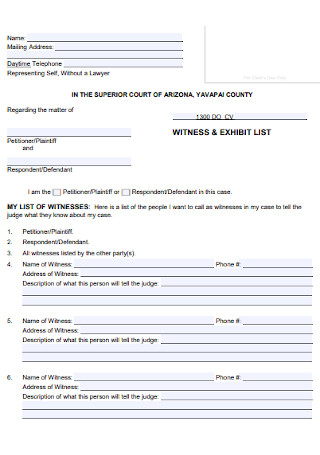
Witness and Exhibit List
download now -
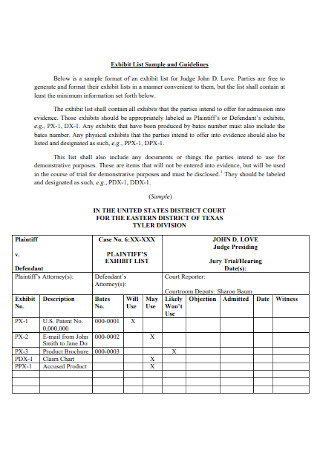
Sample Exhibit List Template
download now -
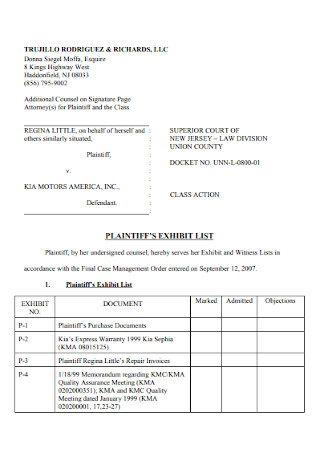
Plaintiffs Exhibit List
download now -
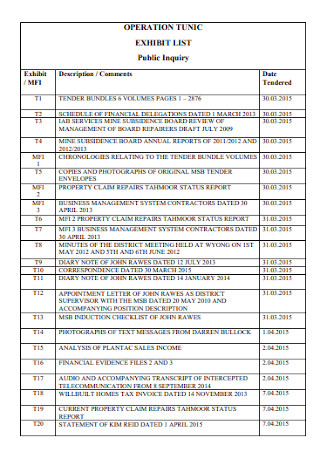
Public Inquiry Exhibit List
download now -
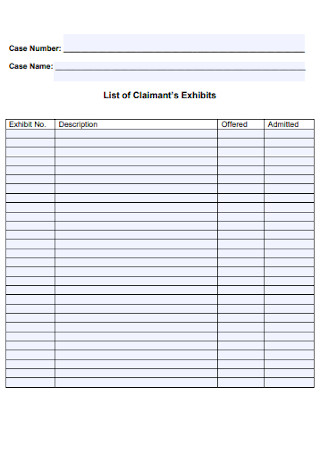
List of Claimants Exhibits
download now -

Master Exhibit List
download now -
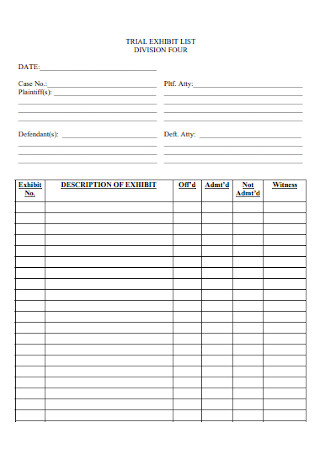
Trail Exhibit List
download now -
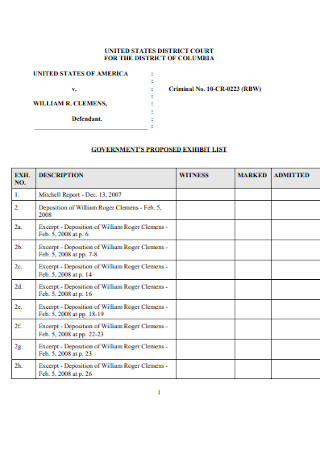
Government Proposed Exhibit List
download now -
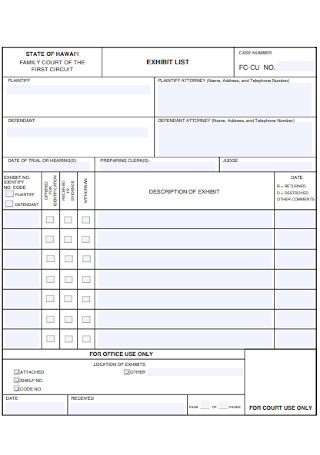
Basic Exhibit List Template
download now -
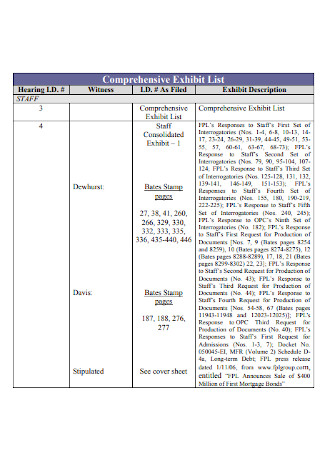
Comprehensive Exhibit List
download now -
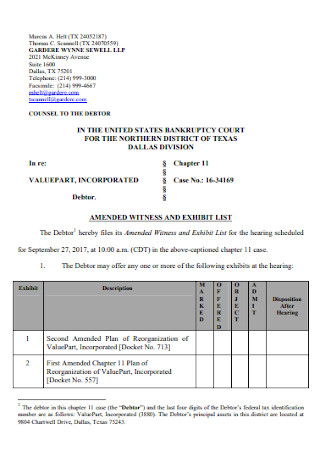
Amended Witness Exhibit List
download now -
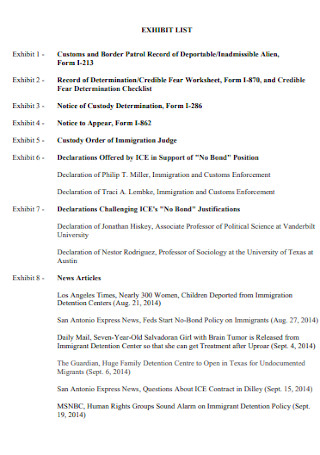
Simple Exhibit List Template
download now -
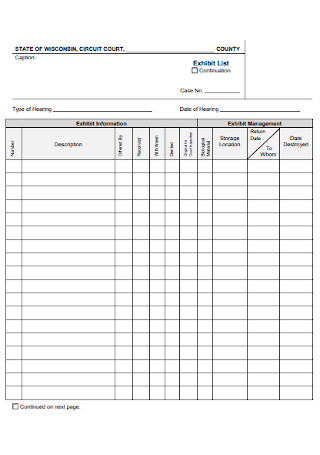
Exhibit Management List
download now -
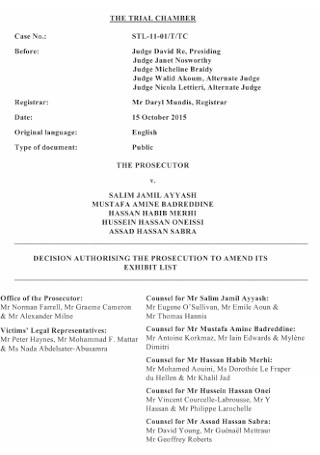
Trail Chamber Exhibit List
download now -
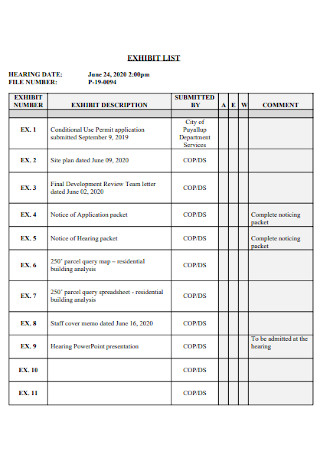
Formal Exhibit List Template
download now -
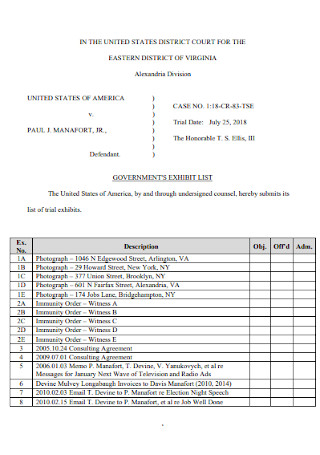
Government Exhibit List Template
download now -
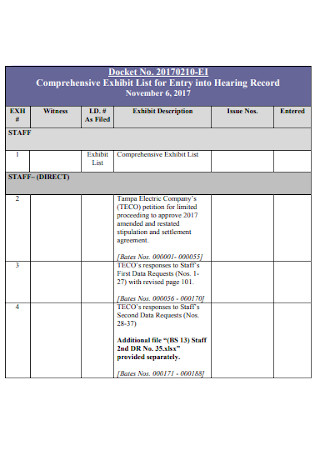
Comprehensive Exhibit List for Entry
download now -
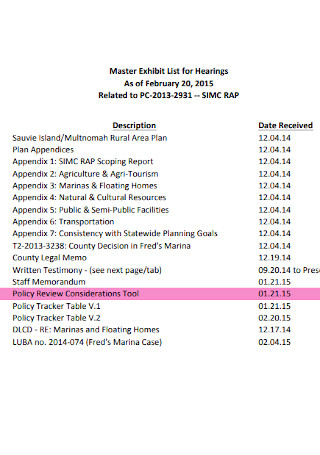
Master Exhibit List for Hearings
download now
FREE Exhibit List s to Download
18+ Sample Exhibit Lists
What is an Exhibit List?
Types of Exhibit Lists Used in Court Cases
Types of Exhibition Lists Used in Trade Shows and Exhibitions
How to Make an Exhibit List
FAQs
How to make an exhibit list for trade shows?
Can I find a court exhibit list template in PDF format for family law cases?
Are there PDF exhibit lists for trade shows and exhibitions?
How can I create a witness and exhibit list in PDF for a trial?
What is an Exhibit List?
An exhibit list is a document used in legal proceedings, such as court cases, to outline and identify the exhibits or evidence that will be presented during a trial. It serves as a crucial organizational tool for attorneys, paralegals, and judges. The exhibit list typically includes a description of each exhibit, its relevance to the case, and its intended use. It ensures that all parties have a clear understanding of the evidence to be presented, helps in the preparation of witnesses, and facilitates the smooth flow of the trial. Templates for exhibit lists are available, simplifying the process for family law cases and aiding paralegals in efficiently managing trial exhibits.
On the other hand, an exhibit list for trade shows is a curated compilation of participating exhibitors and their respective booth locations or numbers. It serves as a guide for attendees, organizers, and exhibitors themselves. The list typically includes essential details about each exhibitor, such as their company name, product or service offerings, contact information, and booth location on the trade show floor. Exhibitor lists for trade shows facilitate navigation, allowing attendees to locate specific exhibitors of interest, plan their visits, and engage with relevant businesses. Organizers utilize these lists to ensure a smooth flow of traffic and provide a comprehensive overview of the event’s participants.
Types of Exhibit Lists Used in Court Cases
Various types of exhibit lists play a crucial role in court cases. They include plaintiff’s and defendant’s exhibit lists, joint exhibit lists, expert witness exhibit lists, and more. These lists assist in organizing and presenting evidence, ensuring a smooth trial process, and supporting effective communication of facts and arguments.
Types of Exhibition Lists Used in Trade Shows and Exhibitions
Exhibition lists used in trade shows and exhibitions come in various types to enhance attendee experiences. These lists include general exhibitor lists, premium exhibitor lists, new product showcases, industry-specific lists, and more. They aid attendees in navigating the event, discovering featured exhibitors, and targeting their specific interests for networking and business opportunities.
How to Make an Exhibit List
Do you need to create an exhibit list for your legal work? Follow the simple steps for making a clear and effective exhibit list.
Step 1: Gather and Review Evidence
Collect all relevant exhibits and thoroughly review them. Identify the exhibits that are admissible, supportive of your case, and essential for presenting a compelling argument.
Step 2: Organize and Describe Exhibits
Create a clear and concise description for each exhibit, including its relevance, date, source, and any additional details. Organize the exhibits in a logical and sequential order that aligns with the flow of your case.
Step 3: Utilize a Template or Format
Use a pre-designed exhibit list template or create your own format. Ensure that the template includes sections for exhibit numbers, descriptions, relevance, and any other required information as per court rules or guidelines.
Step 4: Maintain and Update the List
Continuously update the exhibit list as the case progresses. Add new exhibits, remove duplicates, and keep track of any changes made. Maintain a well-organized and updated exhibit list throughout the entire duration of the court case.
FAQs
Collect comprehensive information about each exhibitor, including their company name, booth number, product or service offerings, and contact details. Gather this information from exhibitor registration forms or communication with the trade show organizers. Organize the exhibitors into relevant categories or sectors based on their industry or offerings. This grouping helps attendees easily navigate and locate exhibitors of interest during the trade show. Design an exhibit list that is visually appealing and user-friendly. Utilize tables, columns, or sections to present exhibitor information in a clear and concise manner. Include key details such as booth location, company description, and any special features or promotions.
Yes, there are PDF templates available specifically designed for court exhibit lists in family law cases. These templates provide a structured format to organize and present evidence, making the process more efficient for paralegals and legal professionals involved in family law proceedings.
Absolutely. PDF exhibit lists for trade shows and exhibitions are commonly available. These lists serve as comprehensive guides for attendees, providing details about exhibitors, booth locations, and other relevant information. They can be easily downloaded, printed, or accessed digitally to assist attendees in navigating the trade show or exhibition.
To create a witness and exhibit list in PDF format for a trial, you can use word processing or PDF editing software. Compile the necessary information about witnesses and corresponding exhibits, including names, contact details, exhibit descriptions, and relevance. Arrange the information in a clear and organized manner, and then save or export the document as a PDF for easy distribution and sharing during the trial.
How to make an exhibit list for trade shows?
Can I find a court exhibit list template in PDF format for family law cases?
Are there PDF exhibit lists for trade shows and exhibitions?
How can I create a witness and exhibit list in PDF for a trial?
Gaining an accurate understanding of the uses and types of exhibit lists is crucial in both court cases and trade shows. Exhibit lists ensure the organized presentation of evidence, facilitate efficient communication and enhance the overall experience for participants. In court cases, different types of exhibit lists cater to specific evidentiary needs. Similarly, trade shows benefit from various exhibit lists that help attendees navigate and engage with exhibitors effectively. By following basic steps to create exhibit lists, legal professionals and event organizers can streamline processes, maintain accuracy, and maximize the impact of their respective proceedings or events. If you need to make an exhibit list right now, we have included many sample exhibit lists in PDF and other documents for your legal cases like an affidavit sample and character witness statements or for your trade shows and art exhibitions like a trade agreement.
